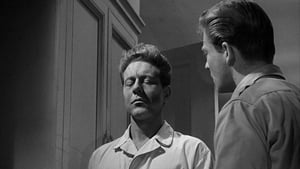Contact: [email protected]
Video Sources 0 Views

The Monolith Monsters Colorized 1957: Best Journey into Sci-Fi History
Synopsis
[ez-toc]




Introduction
In the ever-evolving landscape of cinema, where modern blockbusters dominate the screens, there’s a charm in revisiting the classics. One such gem that has withstood the test of time is “The Monolith Monsters Colorized.” In this article, we will delve into the intricacies of this sci-fi classic, exploring its plot, characters, and the significance of its colorized version. Additionally, we’ll navigate through the controversial realm of colorization in film restoration, pondering its impact on the cinematic experience.
Read Media File Transfer Agreement: Terms and Conditions
Read FAQ
The Monolith Monsters Colorized: A Sci-Fi Classic
“The Monolith Monsters Colorized” emerged from the sci-fi boom of the 1950s, a decade that birthed iconic films such as “Tarantula” (1955) and “Forbidden Planet” (1956). Directed by Jack Arnold, the movie stars Grant Williams, Lola Albright, and Les Tremayne. The plot revolves around a small desert town facing a peculiar threat – meteor fragments that petrify everything they touch. As we explore the storyline, it becomes evident why this film is held dear by sci-fi enthusiasts.
The characters, portrayed by a talented cast, bring depth to the narrative. Grant Williams’ performance stands out, reminiscent of his role in “The Incredible Shrinking Man” (1957). Lola Albright and Les Tremayne complement the ensemble, contributing to the film’s overall allure. In the context of other sci-fi films of the era, “The Monolith Monsters Colorized” distinguishes itself with a unique premise and exceptional execution.
The Art of Colorization in Film Restoration
Colorization, a controversial technique, involves adding color to black-and-white films. In the case of “The Monolith Monsters Colorized,” this process plays a pivotal role in revitalizing the visual appeal of the movie. The film’s desert setting, coupled with the meteor rocks that are central to the plot, benefits greatly from the vibrant hues. The visual spectacle created by colorization enhances the audience’s engagement, breathing new life into a classic.
The meticulous use of special effects in portraying the crystalline structures and the petrification process showcases the artistry involved in the film’s creation. The barren landscapes of the desert, captured with precision, become a character in themselves, setting the stage for an immersive experience.
Bringing The Monolith Monsters Colorized to Life in Vibrant Hues
As we explore the colorized version of “The Monolith Monsters Colorized,” the significance of color becomes apparent. The crystals, a crucial element in the storyline, are now presented in all their colorful glory. The water, once portrayed in shades of grey, now glistens in vivid blue, accentuating the contrast between the petrified landscape and the untouched surroundings. The colorization process not only breathes life into the visual aspects but also enriches the thematic elements of the film.
The 1950s sci-fi aesthetic, with its charmingly retro futuristic sensibilities, is heightened by the injection of color. This transformation invites viewers to reevaluate the film, appreciating its narrative nuances in a new light.
The Making of a Sci-Fi Masterpiece
Released in 1957, “The Monolith Monsters Colorized” reflects the spirit of the times. The post-war era was marked by scientific optimism and fascination with the unknown, evident in the influx of sci-fi films. Understanding the historical context is crucial in appreciating the film’s creation process. The advent of new technologies and the growing interest in space exploration influenced the narrative and visual elements of “The Monolith Monsters. Colorized”
The behind-the-scenes craftsmanship of the film, from the script to the practical effects, deserves recognition. The dedication of the filmmakers, including director Jack Arnold and cinematographer Ellis W. Carter, contributed to the film’s status as a sci-fi masterpiece.
Reception, Restoration, and Beyond
Upon its release, “The Monolith Monsters Colorized” garnered positive reviews, praised for its originality and visual appeal. The film’s legacy endures in the hearts of sci-fi enthusiasts, cementing its place in the genre’s pantheon. The decision to colorize the movie in later years sparked debates among purists, raising questions about the artistic integrity of the original black-and-white version.
The impact of colorization on audience perception is a fascinating aspect to explore. Does the addition of color detract from the authenticity of the 1950s experience, or does it open the door for a new generation of viewers to appreciate the film? These questions linger as we navigate through the varied opinions expressed in user reviews and critical analyses.
The Monolith Monsters Colorized: Revitalizing a Cinematic Masterwork
The decision to colorize “The Monolith Monsters Colorized” was a strategic one, aimed at introducing the classic to contemporary audiences. Clifford Stine, the visual effects artist responsible for the meteorite and petrification effects, played a crucial role in the colorization process. The film’s setting in San Angelo, California, gains added resonance as the colorized version brings to life the unique characteristics of the landscape.
The silicon solution used in the film’s plot, which turns ordinary rocks into towering monoliths, is now portrayed in striking colors, emphasizing the otherworldly nature of the phenomenon. The collaboration between the original filmmakers’ vision and the modern touch of colorization creates a harmonious blend that captivates audiences anew.
Experiencing The Monolith Monsters Colorized Anew: Original vs. Colorized Versions
To fully appreciate the impact of colorization on “The Monolith Monsters,” a comparative analysis of the original black-and-white film and its colorized counterpart is essential. Robert M. Fresco, a key figure in the film’s production, provided valuable insights into the choices made during the colorization process.
While the original version possesses a certain nostalgic charm, the colorized edition breathes fresh life into the film. The vibrant hues highlight the contrast between the petrified landscape and the untouched elements, providing a heightened visual experience. Both versions, in their own right, contribute to the film’s enduring appeal.
Preserving Film Heritage Through Colorization: Controversies and Considerations
The debate surrounding colorization often revolves around the preservation of a film’s artistic integrity. Purists argue that tampering with the original black-and-white presentation dilutes the essence of the filmmaker’s vision. On the other hand, proponents of colorization contend that it enhances accessibility and introduces classic films to new audiences.
As we navigate through these controversies, it becomes evident that the decision to colorize a film is a delicate balance between respecting the creator’s intent and adapting to evolving audience preferences. Finding common ground that preserves the essence of the original while catering to modern tastes is an ongoing challenge in the realm of film restoration.
The Future of Colorization Technology in Film Restoration
The evolution of colorization technology opens up new possibilities for film restoration projects. As we peer into the future, advancements in AI and machine learning may offer more nuanced and accurate colorization processes. The challenge lies in striking a balance that respects the historical context of the film while catering to contemporary visual expectations.
The incorporation of cutting-edge technologies may redefine the boundaries of colorization, providing filmmakers with tools to enhance the viewing experience without compromising the integrity of the original work. The future holds exciting prospects for the marriage of nostalgia and innovation in the realm of film restoration.
Rediscovering Classics: Recommended Colorized Films to Watch
For cinephiles and casual viewers alike, the world of colorized classics offers a unique cinematic experience. To further enrich your journey into the past, here’s a curated list of must-see colorized films:
- Casablanca (1942) – The timeless romance gains a new dimension with the addition of color.
- It’s a Wonderful Life (1946) – The holiday classic becomes even more heartwarming in vibrant hues.
- Gone with the Wind (1939) – The epic tale of love and loss is revitalized with the richness of color.
- The Wizard of Oz (1939) – Journey down the yellow brick road in a technicolor wonderland.
- Psycho (1960) – Hitchcock’s masterpiece takes on a new level of intensity in color.
Conclusion
In concluding our exploration of “The Monolith Monsters Colorized” and the contentious world of colorization, the invitation is extended to experience the film in its colorized version. The fusion of 1950s sci-fi aesthetics with modern colorization techniques creates a cinematic experience that bridges the gap between the past and present. As we navigate through controversies, appreciate the craftsmanship, and glimpse into the future of colorization, let “The Monolith Monsters Colorized” stand as a testament to the enduring magic of cinema. Embrace the opportunity to rediscover this sci-fi classic and, in doing so, celebrate the art of film restoration.










